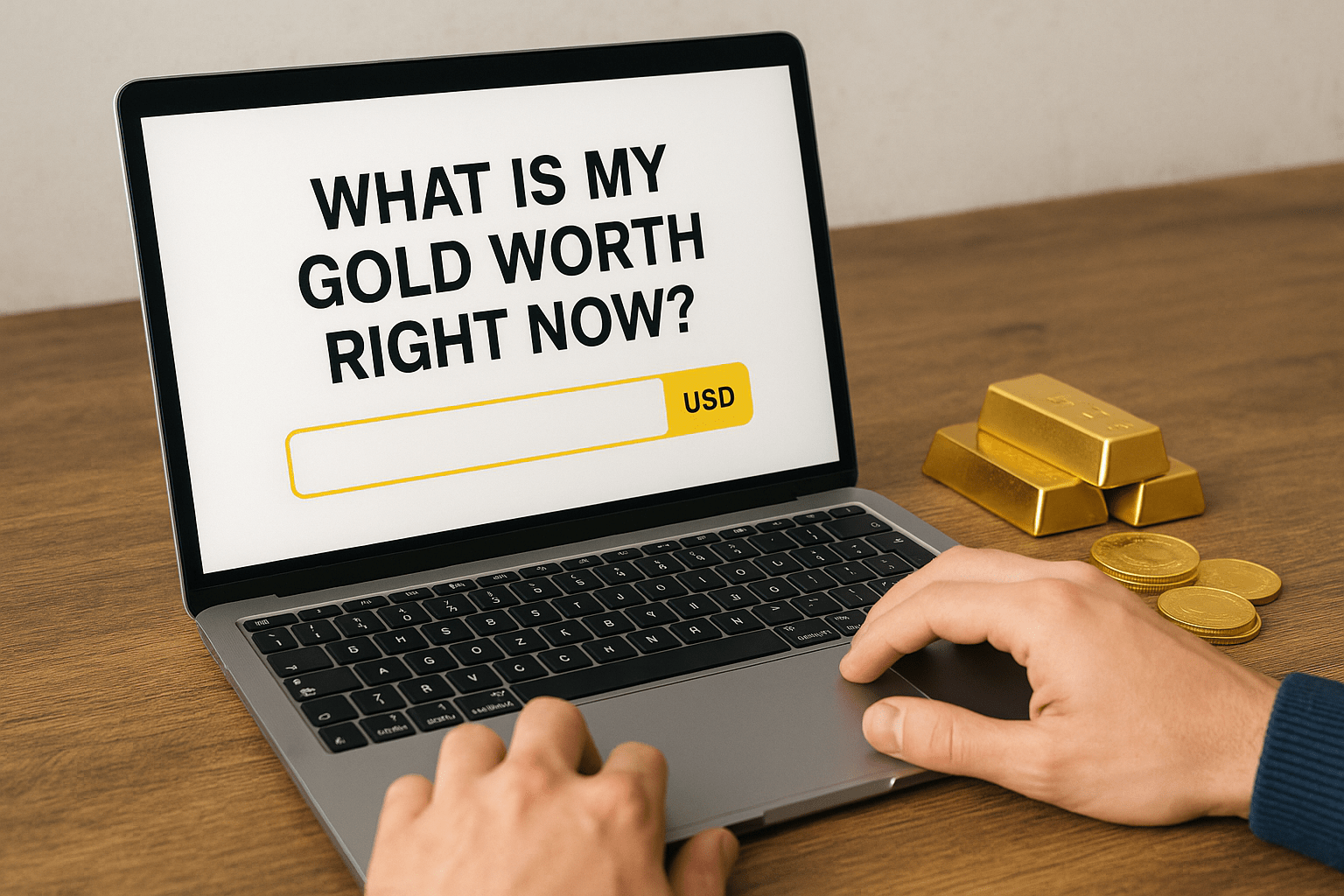In the glittering world of precious metals, knowledge isn’t just power—it’s profit. Whether (check gold value instantly) you’re a seasoned investor appraising your portfolio, a family heirloom holder curious about its worth, or someone considering buying their first gold coin, one question is universal: “What is my gold worth right now?” Fortunately, you no longer need to be a market expert to find out. You can check gold value instantly with modern online tools designed to demystify the process.
This comprehensive guide will walk you through everything you need to know about gold valuation and how to use our powerful calculator to get accurate, real-time insights in seconds.
Why is Gold Valuable? A Timeless Legacy
Before we dive into the “how,” it’s crucial to understand the “why.” Gold’s value is rooted in a unique combination of properties:
-
Scarcity: It’s rare and difficult to extract, with all the gold ever mined fitting into just three Olympic-sized swimming pools.
-
Durability: It doesn’t tarnish, corrode, or rust, preserving its beauty and mass indefinitely.
-
Intrinsic Value: Historically, it has been a universal symbol of wealth and a reliable store of value, especially during times of economic uncertainty, inflation, or geopolitical turmoil.
Unlike paper currency, gold is a tangible asset that has maintained its purchasing power for centuries. According to the World Gold Council, central banks around the world continue to be net buyers of gold, highlighting its enduring role in the global financial system.

How is the Price of Gold Determined?
The spot price you see quoted online is not set by a single entity. It’s a dynamic global benchmark determined by the trading activity on major commodities exchanges like the COMEX in New York and the LBMA in London. This price, typically quoted per troy ounce in U.S. dollars, fluctuates continuously based on:
-
Supply and Demand: Mining output, central bank sales/purchases, and jewelry demand.
-
The U.S. Dollar: Gold has an inverse relationship with the dollar. A stronger dollar makes gold more expensive for holders of other currencies, which can dampen demand.
-
Inflation and Interest Rates: Gold is often seen as a hedge against inflation. When real interest rates (interest rates minus inflation) are low, gold becomes more attractive.
-
Geopolitical Uncertainty: Wars, political instability, and economic crises drive investors toward “safe-haven” assets like gold.
Understanding this helps you see that the price is a live pulse, not a static number. This is why the ability to check gold value instantly is so critical for making timely decisions.
Beyond the Spot Price: What Your Gold is Actually Worth
Here’s the most important lesson for any gold owner: the spot price is the starting point, not the finish line. The value of the physical gold in your hand depends on several key factors:
-
Purity (Karat): Gold is alloyed with other metals for strength. Pure gold is 24 karats (24k). Common purities include:
-
24k Gold: 99.9% pure
-
22k Gold: 91.7% pure (common in many cultural jewelry)
-
18k Gold: 75.0% pure
-
14k Gold: 58.3% pure (very common in the US)
-
10k Gold: 41.7% pure
-
-
Weight: Measured in troy ounces (oz), grams (g), or pennyweight (dwt). A troy ounce is approximately 31.1 grams.
-
Form and Premium:
-
Bullion (Bars & Coins): These are valued for their metal content but carry a “premium” over the spot price to cover manufacturing, distribution, and a small dealer margin. Popular coins like the American Eagle or Canadian Maple Leaf may have higher premiums due to their recognizability.
-
Jewelry: Has artistic and craftsmanship value (“making charges”) added, but when selling for melt value, it’s typically worth less than its pure gold content due to refining costs.
-
Numismatic Coins: Rare, collectible coins are valued for their rarity, condition, and historical significance, often far exceeding their melt value. They are for expert collectors, not bullion investors.
-

How to Use Our Calculator to Check Gold Value Instantly
Our calculator is designed to cut through this complexity. Here’s a step-by-step guide:
-
Find the Live Spot Price: The tool automatically pulls in the current market price.
-
Select Your Gold’s Purity: Choose the karat (e.g., 14k, 18k, 22k, 24k) from a dropdown menu. The calculator knows the percentage of pure gold in each.
-
Enter the Weight: Input the weight of your item. You can usually toggle between grams, ounces, etc.
-
Select Your Currency: See the value in your local currency for easy understanding.
-
Calculate!: Click the button, and the tool will instantly display the melt value of the pure gold in your item.
Example: Let’s say the live spot price is $1,800 per troy ounce. You have a 50-gram, 18k gold chain.
-
The calculator first finds the pure gold content: 50 grams * (75.0% purity) = 37.5 grams of pure gold.
-
It converts this to troy ounces: 37.5 grams / 31.1035 = ~1.205 troy ounces.
-
It then calculates: 1.205 oz * $1,800 = $2,169.
This is the approximate intrinsic metal value before any premiums or discounts are applied.
Practical Applications: When to Check Your Gold’s Value
-
Selling Gold Jewelry: Get an informed baseline before visiting a pawn shop, jeweler, or refiner to ensure you get a fair offer.
-
Buying Gold: Understand the premium you’re paying over the spot price to avoid overpaying for bullion coins or bars.
-
Insurance Appraisals: Ensure your valuable items are adequately insured for their current replacement value.
-
Estate Planning: Accurately value inherited gold assets for equitable distribution among heirs.
-
Portfolio Tracking: Monitor the value of your gold holdings as part of your overall investment strategy.
A Final Word of Caution
While our calculator provides an excellent estimate of melt value, remember that a final buying or selling price will be influenced by the dealer’s buy/sell spread, the item’s form, and market liquidity. Always get multiple quotes for buying or selling significant amounts.
The power to check gold value instantly empowers you to participate in the gold market with confidence and clarity. It transforms a complex, global market into a simple, understandable number for your specific holdings.
Frequently Asked Questions (FAQs)
Q: How often is the gold price in the calculator updated?
A: Our calculator pulls data from reliable financial market APIs and updates every 60 seconds to provide a near real-time spot price.
Q: Why is the price a buyer offers me lower than the calculator’s value?
A: The calculator shows the pure melt value. Buyers (refiners, jewelers, pawn shops) will offer less than this to cover their business costs (melting, refining, assay fees, risk, and profit margin). A fair offer is typically 70%-90% of the melt value, depending on the buyer and the form of your gold.
Q: Does the calculator work for gold-plated items?
A: No. Gold-plated, filled, or rolled items contain only a microscopic layer of gold. The amount is so small that it’s often not economical to extract, and the calculator cannot provide a meaningful value for them.
Q: Is the value shown the price I will get if I sell?
A: Not exactly. It is the intrinsic metal value. The final price you are offered will be based on this value, minus any buyer’s fees, premiums, or refining costs. It is your benchmark for negotiating a fair price.
Disclaimer: This article and the associated calculator are for educational and informational purposes only. The gold value provided is an estimate based on current market data and should not be considered a formal appraisal or financial advice. Gold prices are highly volatile. We do not guarantee the accuracy of the data or the final valuation. For specific advice regarding buying, selling, or investing in gold, please consult with a qualified financial advisor or professional appraiser. If you have any concerns regarding the content of this post, please visit our DMCA page for guidance on content removal and verification procedures.
